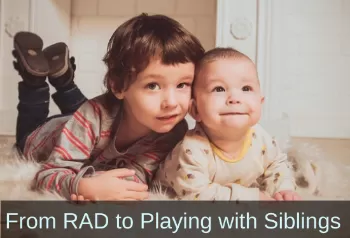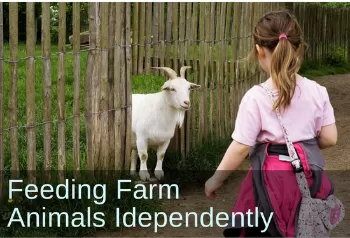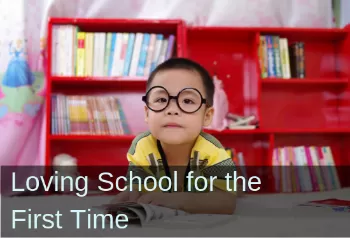Trauma (PTSD)
Rhythmic Movements and Reflex Integration, Hope for Resolving Trauma
by Sonia Story, M.S.
When individuals experience trauma, it often activates the fight, flight, or freeze responses of the nervous system. These primitive nervous system states are helpful for our survival and protection during development, but if they continue to persist after infancy, or if they are activated by trauma, it can make life very challenging and uncomfortable.
A nervous system that is frozen or continuously on alert cannot feel safe and secure. In these situations, individuals may be able to compensate, but the underlying survival responses often negatively influence their emotional state and actions. When fight, flight, or freeze states are active, it can manifest as depression, anxiety, sensory disorders, aggression, obsessive compulsive disorders, behavior issues, social-emotional challenges, selective mutism, or withdrawal from life activities.
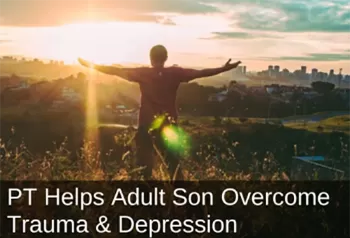 Young man overcomes trauma and depression; read his amazing storyTherapists and parents are using neurodevelopmental movements (innate rhythmic movements and primitive reflex integration) from the Brain and Sensory Foundations program to help individuals overcome trauma and anxiety. We start with enjoyable, relaxing rhythmic movements, using a relational approach and emphasizing connection.
Young man overcomes trauma and depression; read his amazing storyTherapists and parents are using neurodevelopmental movements (innate rhythmic movements and primitive reflex integration) from the Brain and Sensory Foundations program to help individuals overcome trauma and anxiety. We start with enjoyable, relaxing rhythmic movements, using a relational approach and emphasizing connection.
Trauma specialists recognize the importance of regulating the brain and nervous system through the calming action of sensory-motor tools. The neurodevelopmental movements are perfectly in line with Dr. Bruce Perry's Neurosequential Treatment Model. As Perry (2006) states, rhythmic sensory input is effective for helping traumatized children, most likely by means of promoting brainstem regulation.
Why are innate infant movements uniquely effective for trauma?
Many individuals report that the innate infant movements help them feel safe and settled. There is a reason for this. Human beings are wired to respond to infant movements. In early infant development these same movements naturally bring us to more calm, mature, and regulated states, transforming the fight, flight, and freeze responses to more functional nervous system states. We can use infant movements to tap into this innate response and recover more quickly after traumatic events.
Using innate movements to address trauma is not a substitute for support from a qualified mental health professional; however, innate movements can be used as part of an overall plan to overcome trauma and anxious states that are hindering individuals from being able to function well. The innate movements work for all ages and are especially useful for children who may not want to engage in other types of therapy.
Because they directly impact the nervous system, infant movements can be highly effective for addressing trauma and anxiety. The innate rhythmic movements and primitive reflex movements may be the most effective tools we have for helping with trauma in deep and lasting ways as you can see from the stories of transformation here.
This little boy had an extensive history of child abuse and neglect, having been removed from his parent’s custody when he was two years old. He was experiencing multiple outbursts per day, often directed at siblings. In addition to work with a mental health counselor, he was being helped by an OT who believed he had unintegrated primitive reflexes hindering his progress. Find out how this OT used rhythmic movements and primitive reflex integration to help him improve self-regulation, transitions, and his relationships with his siblings.
This little girl with a history of trauma came to OT because of her challenges completing multi-step activities, poor hand skills, and sensory sensitivities that limit her participation in daily tasks. After approximately six sessions, she was able to independently complete 3-4 step activities such as feeding the rabbits and goats at her foster home and her handwriting improved. This case study shows how this child's OT helped her complete tasks, boosting her joy and self-esteem.
Disruptive behavior, anxiety, and an inability to pay attention—suspected as a result of physical trauma—made a classroom environment difficult to navigate for this little boy. Read how after three months of rhythmic movements and primitive reflex integration, he is a much calmer and happier child, and able to enjoy school.
See more examples showing the power of neurodevelopmental movements to address trauma.
Get neurodevelopmental movements to help resolve trauma and anxiety in the Brain and Sensory Foundations, First Level course.
Want an intro course first? See information below.
Reference
Perry, B. D. (2006). Applying principles of neurodevelopment to help traumatized and maltreated youth. In N. B. Webb (Ed.), Working with traumatized youth in child welfare. Guilford Press.
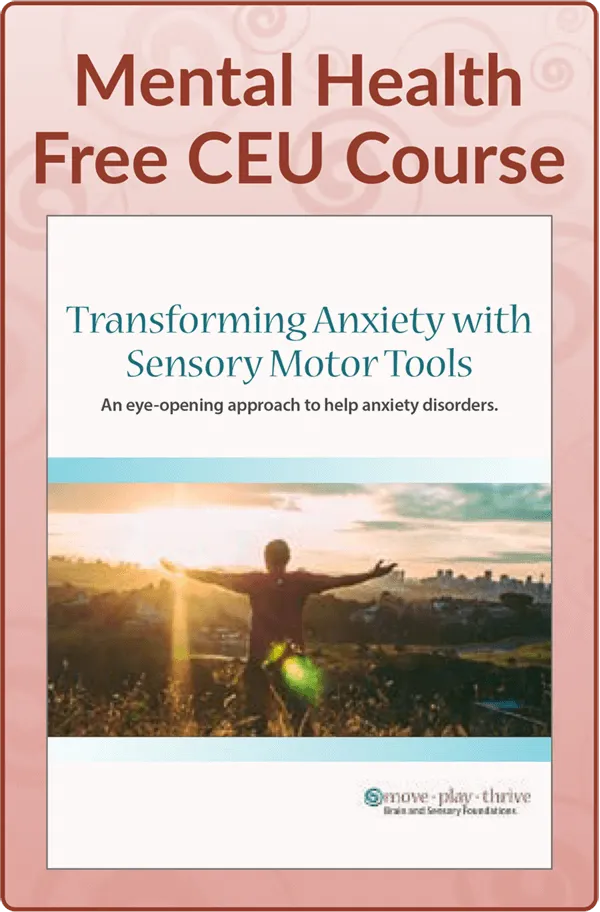 Free 1 Hour CEU Training for Mental Health Therapists*
Free 1 Hour CEU Training for Mental Health Therapists*
Transforming Anxiety with Sensory Motor Tools
with Sonia Story, MS and Christine Durfee, PhD, LPC-S
Get this eye-opening approach to help anxiety disorders using sensory-motor tools. In this one-hour training you get:
- Why neurodevelopmental movements are important to resolve anxiety
- A fast-acting calming strategy
- Perspectives from mental health professionals successfully using these tools
*CEU credit of 1 hour is awarded for Licensed Professional Counselors in Texas. For mental health therapy professionals in other USA jurisdictions, inquire with your licensing board.
More information and free resources for parents and mental health professionals
Sonia Story, M.S. has been teaching neurodevelopmental movements since 2006.
Sonia developed the Brain and Sensory Foundations program to provide comprehensive training in neurodevelopmental movements—combining innate rhythmic movements, play, primitive reflexes, and postural reflexes.
She earned a Bachelor's degree in biology/psychology and a Master’s degree in Movement Sciences. She is the author of The Importance of Reflex Integration and the Evidence eBook, giving the rationale and evidence basis for using neurodevelopmental movements for helping with challenges such as ADHD, Sensory Processing Disorders, anxiety, emotional dysregulation, visual skill deficits, poor social skills, gross and fine motor delays and other neurodevelopmental and behavioral disorders.
Her work is featured in numerous podcasts, summits, and conferences, and in the books Almost Autism: Recovering Children from Sensory Processing Disorder; Special Ed Mom Survival Guide; Family Health Revolution; and Same Journey, Different Paths—Stories of Auditory Processing Disorder.
Sonia’s mission is to help children and families experience the profound benefits of neurodevelopmental and integrative movements for more functional and fulfilling lives.


